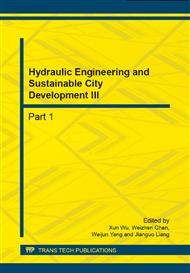[1]
P. A. Rovinski: Crna Gora u prošlosti i sadašnjosti (Montenegro in the past and present), Cetinje, (1994), p.309.
Google Scholar
[2]
P. A. Rovinski: Zapisi o Crnoj Gori (Memorials on Montenegro, ) Podgorica, (2001), p.97.
Google Scholar
[3]
V. Murgul: Features of energy efficient upgrade of historic buildings (illustrated with the example of Saint-Petersburg). Journal of Applied Engineering Science, Vol. 12 (1) (2014), pp.1-10.
DOI: 10.5937/jaes12-5609
Google Scholar
[4]
E. Aronova, G. Radovic, V. Murgul, N. Vatin: Solar Power Opportunities in Northern Cities (Case Study of Saint-Petersburg). Applied Mechanics and Materials. Vols. 587-589 (2014), pp.348-354.
DOI: 10.4028/www.scientific.net/amm.587-589.348
Google Scholar
[5]
P. Colonna, R. Pascazio: Transport between Adriatic and Mediterranean Coasts: Historical and Motivational Analysis. Social and Behavioral Sciences, Vol. 53, (2012), pp.134-145.
DOI: 10.1016/j.sbspro.2012.09.867
Google Scholar
[6]
D. Vuksanovic, V. Murgul, N. Vatin, E. Aronova: Shadowing impact on amount of power generated by photovoltaic modules. Applied Mechanics and Materials. Vols. 587-589 (2014), pp.342-347.
DOI: 10.4028/www.scientific.net/amm.587-589.342
Google Scholar
[7]
G. Radovic, V. Murgul, N. Vatin: Fast urban development of Cetinje – old royal capital of Montenegro. Applied Mechanics and Materials. Vols. 584-586 (2014), pp.564-569.
DOI: 10.4028/www.scientific.net/amm.584-586.564
Google Scholar
[8]
V. Murgul: Solar energy systems in the reconstruction of heritage historical buildings of the northern towns (for example Sankt-Petersburg). Journal of Applied Engineering Science, Vol. 12 (2) (2014), pp.121-128.
DOI: 10.5937/jaes12-6136
Google Scholar
[9]
V. Murgul: Solar energy in the reconstruction of urban environment of historic building Saint-Petersburg, Architecture and Modern Information Technologies, 2 (23) (2013), pp.1-24.
Google Scholar
[10]
V. Murgul: Capabilities of using the solar energy for energy supply of the dwelling buildings of the historical area of Saint-Petersburg and for city environment quality improvement, Architecture and Modern Information Technologies, 1 (22) (2013).
Google Scholar
[11]
S. Golovina, V. Murgul: Solar energy systems in the architecture of historic cities. Bulletin of Civil Engineers. 5 (40) (2013), pp.26-31.
Google Scholar
[12]
N. Dučić: Bilješke (Notes). Belgrade, (1874), p.23.
Google Scholar
[13]
G. Radović: Stambena i javna arhitektura Cetinja of XV vijeka do II svjetskog rata – doctor disertation. Belgrade, Faculty of Architecture of Belgrade, (2003), p.213.
Google Scholar
[14]
N. Vatin, T. Nazmeeva, R. Guslinscky: Problems of cold-bent notched c-shaped profile members. Advanced Materials Research. Vols. 941-944 (2014), pp.1871-1875.
DOI: 10.4028/www.scientific.net/amr.941-944.1871
Google Scholar
[15]
V. Vatin, D. Nemova, A. Kazimirova, K. Gureev: Increase of energy efficiency of the building of kindergarten. Advanced Materials Research. Vols. 953-954 (2014), pp.1537-1544.
DOI: 10.4028/www.scientific.net/amr.953-954.1537
Google Scholar


